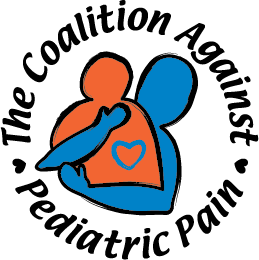
By DM. Sullivan
ABC’s medical drama Grey’s Anatomy’s recently aired an episode, Falling Slowly, which featured a story line about a young patient with Ehlers Danlos Syndrome, and a grateful EDS Community has been abuzz on social media ever since.
Thank you for finally giving us a voice!
Validation at last!
Awareness!
Well, sort of….
Reviews have been mixed, as some EDSers feel disappointment that Grey’s writers actually botched this awesome opportunity to educate and lay down the facts on a highly under diagnosed and frequently misunderstood condition. Does Dr. Webber really need to go back to med school? Maybe. But in getting some of the facts wrong, Grey’s Medical writers may have inadvertedly delivered their most true-to-life story line yet.
A young woman named Emma is a frequent flier at the hospital clinic, where Dr. Alex Karev is starting his shift. Each time, she complains of headaches, dizziness, pain and problems keeping hydrated. She is defensive, inpatient and clearly shut down, which does not make a great first impression on the doctors who are evaluating her.
Based on her symptoms and chronic admissions, the medical team jumped to the conclusion that she must be an alcoholic. As the attending nurse practioner instructs Dr. Alex Karev to basically “treat her and street her”, Dr. Karev makes the decision to try and help. He and Dr. Webber devise a good cop/bad cop routine to try to scare this kid straight into admitting she has a drinking problem. But Emma sees through their façade. This kid has clearly been there before. Offended and emotionally upset, she attempts to pull her IV and discharge herself when she suddenly suffers a shoulder dislocation in their presence. Both Karev and Webber express horror at what they are witnessing, as the child calmly explains that this happens often, and she pops her shoulder back into place.
When the light bulb goes off and the diagnosis of Ehlers Danlos is made (way to go Dr. Karev, you have always been one of my favorites!) the mixed outpouring of emotions it evoked resonates with so many people with rare conditions who are searching for answers. At least all of Emma’s quirky, crazy symptoms has a name. It us not all in her head.
But as Dr. Webber goes on to explain, Ehlers Danlos Syndrome is an extremely rare condition, and he has only seen two cases in his whole career. And as Dr. Karev beams that he has solved his one-in-a-million case….. but there is not a lot that can be done for Emma….this writer and EDS mom’s head began to explode.
Setting The Record Straight
Ehlers Danlos is not rare. It unfortunately can be rarely recognized. Ehlers-Danlos syndrome is the name given to a group of more than 10 different inherited disorders that involve a genetic defect in collagen and connective tissue throughout the body.
When my kids were diagnosed five years ago, I was told EDS affects an estimated 1 in 5,000 people. We now know that the numbers on the hypermobile type of EDS are more prevalent. Researchers in Europe recently suggest that connective tissue disorders may in fact, affect 1 in 500, but is medically diagnosed and categorized as gastro problems, stroke, fibromyalgia, etc. Time to update those medical books! Until very recently, EDS was thought to be a muscular-skeletal condition that caused hypermobility and loose joints. Since collagen is one of the most abundant proteins in the body, it is not surprising that all of the bodies systems could potentially be impacted.
So ironically, Dr. Webber’s lack of information on the prevalence of EDS may SEEM like an error on the writer’s part, it is actually a dead on representation of real life. It is not uncommon for doctors to see but not recognize EDS and it’s co-morbid conditions, even in some of the best hospitals in the world.
Not An Alcoholic.Chronic dehydration, fatigue, headaches and dizziness can be a sign of Dysautonomia, a common co-morbid condition of Ehlers Danlos Syndrome. Emma explained her fatigue and problems with fainting and neither Dr. Karev or Dr. Weber thought about Postural Orthostatic Tachycardia. Had they monitored her BP and done a simple poor man’s tilt test (comparing blood pressure while laying, sitting and standing) they would likely have seen that Emma’s heart rate increases at each transition, and that she suffers from POTS. Where is Dr. Christine Wang when you need her? The very fact that Grey’s medical writers did not identify this co-morbid EDS condition is even more ironic as the episode aired during October, which is Dysautonomia Awareness month. Yet once again, the failure to identify this under recognized and mistreated condition is exactly what happens to these kids in real life.
There is not a lot that can be done. So far from true! Seeing a geneticist and identifying the type of EDS can help determine necessary screenings and help establish a strategy and treatment plan. Yes, EDS can be progressive and very complex, but it does not mean that symptoms cannot be proactively managed, interventions performed, and a decent quality of life achieved.
Still More Right Than Wrong
Even if the information about symptoms, prevalence and treatment options may have not been 100% accurate, when you step back and look at the whole story of Emma, you realize just how perfectly the writers captured the realities of living with EDS.
Emma Is Beyond Frustrated.
This child is clearly worn down, feeling badly, and guarded. She has a low tolerance for ineffective medical treatment and physicians who may placate her or not believe her symptoms. She comes off as a bit angry and even uncooperative, but clearly is learning how to stand up for herself and advocate for her needs.
Oh did this characterization of a teen with EDS hit the mark!
My own kids have had to spend way too much time in ER’s and medical settings. I can tell you that when their body fails them, and they have to disrupt life to go in for care, they are pissed! My husband and I are always slightly amused at physicians who interpret their emotional state as anything more. I promise you this quiet, low energy, and guarded child perks right up when he/she is out of these sterile halls. But like a drafted soldier returning to the battlefield again and again, engaged in a long and unwanted war, it is simply not a place they want to be and everyone must be considered the enemy until they prove themselves different. Trusting and opening up to doctors has unfortunately become harder because of past experiences. It can be a very real side effect of chronic illness.
She Holds Hope of Finding A Doctor That Can Help
Being a frequent flier in the ER is the best way for doctors to assume you are either drug seeking, have psych issues or problems with substance abuse. Over time, Emma realized that her symptoms improve and her body feels better after IV hydration, even though she does not really understand why. So she continues to be willing to expose herself to the indignity of the ER because she has hope that maybe someone will finally recognize what is actually wrong and be able to help her. All rare disease people have to keep advocating for themselves. They know their bodies, and they know their symptoms are real, even if they are often discounted.
This is why so many EDSers often seek new doctors. Sadly, people with rare disease have a higher percentage of being categorized as doctor shopping. More seriously in pediatric cases, parents of complex kids can be accused of suffering from Munchausen Syndrome. But finding a doctor with experience is crucial and there are many brilliant and dedicated doctors that can help. Sometimes you just have to kiss a lot of toads before you find your prince or princess.
Low Tolerance For Inexperience
My family laughed when Emma boldly warned Karev that if he is not good with IV’s, to get someone who is. (Way to advocate for yourself, you go girl!!) Fragile tissue and even vascular issues associated with EDS can make drawing blood and starting and keeping IV’s problematic. It only has to happen to you a few times, for you to know that the medical student coming at you with a needle may create whole lot of unnecessary discomfort that could be avoided.
ER’s often tend to be the worst place for Ehlers Danlos patients to go for help.
If you ask most rare patients, they will tell you that they try to avoid ER’s and walk-Ins like the plague. It is simply not worth the time, and being at the mercy of doctors who likely do not know how to really help you, nor the indignity that you often must face, only to leave with marginal relief. It can make you hardened and less trusting, and absolutely less patient.
Horrific Symptoms Can Become The Norm
The look and response on Dr. Webbers face when Emma’s shoulder popped was pure gold. The body is NOT supposed to do that. But for many EDSers it does. And when it happens often enough, it sadly becomes less alarming – though it still can hurt like hell. Many EDSers have learned how to get subluxations back in themselves. It can become the norm.
But I have seen firsthand, some doctors question this unwanted physical ability. My daughter has had doctors ask her to pop her ribs or her shoulder to show them, as if they did not believe she could. (Why the hell would I do that on purpose? She would ask me. It hurts!) I now keep photos handy of past subluxations in case we need to prove them. She can also always flash her permanently hyperextended thumb if they really want to see a circus trick.
Emma Was Lucky
She found a doctor who cared enough to think through her symptoms and try to make sense of them. With all of the pressure, paperwork and heavy caseloads that doctors must deal with these days,that does not always happen.
If she hadn’t been “lucky enough” for her shoulder to pop out in front of her doctors, I am not sure she would have had such a good outcome. She more than likely could have been written off as a head case, or an addict, plugged her into some “one size fits all” treatment plan, or maybe had something put in her medical records at Seattle Grace that could make it harder for her to obtain good, objective care in the future.
So thank you Shondra Rhimes and Grey’s Anatomy for your portrayal of the reality of living life with EDS. Improving awareness is the only way we can make things better for all of the Emma’s out there.
By sharing the true challenges of what really happens to people living with Ehlers Danlos Syndrome, your Falling Slowing episode truly stands up.
Keep the dialogue going.
Could you relate Emma and her EDS Story?
How can patients and doctors better work together to improve care for people living with EDS?

